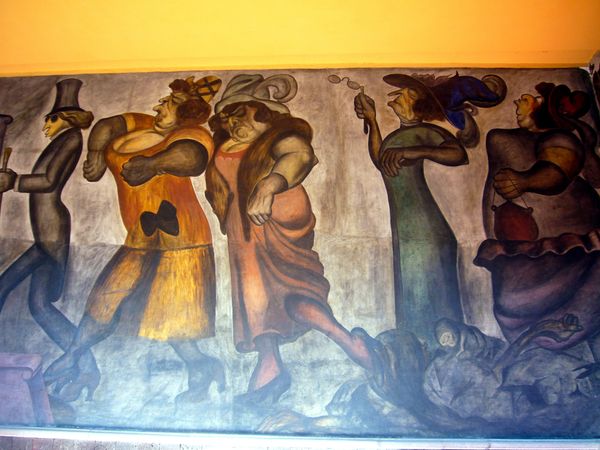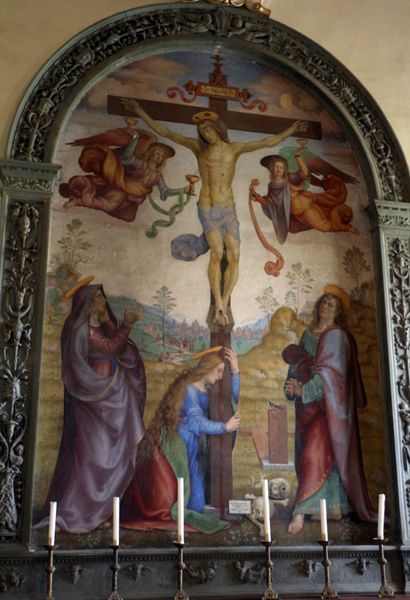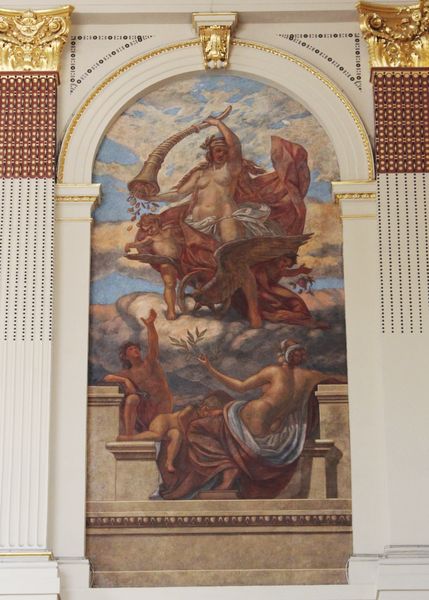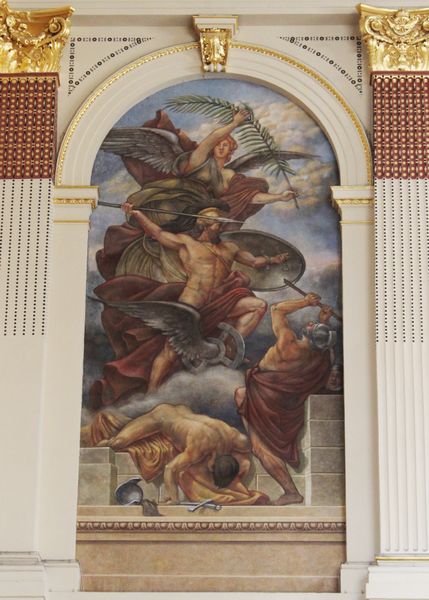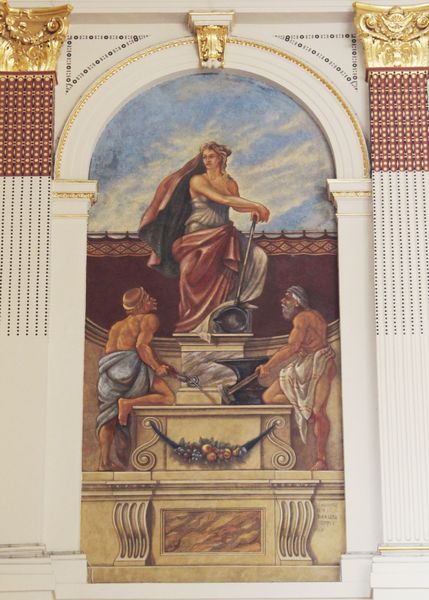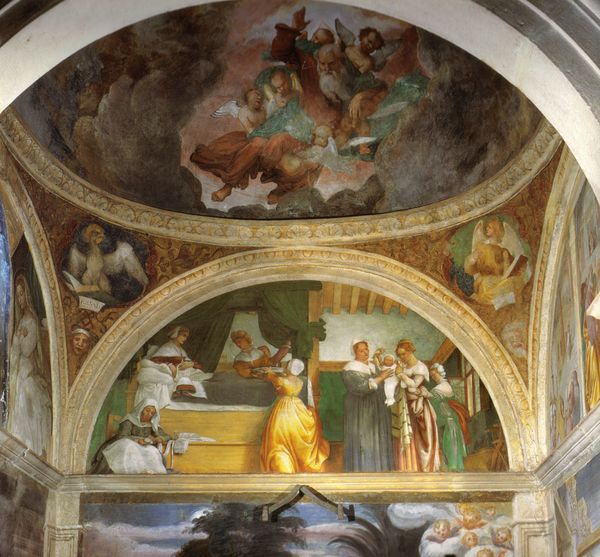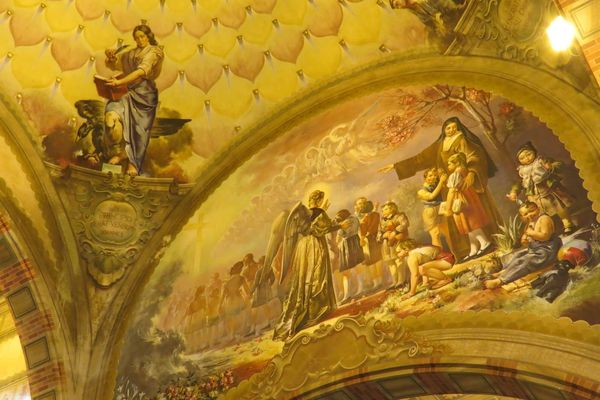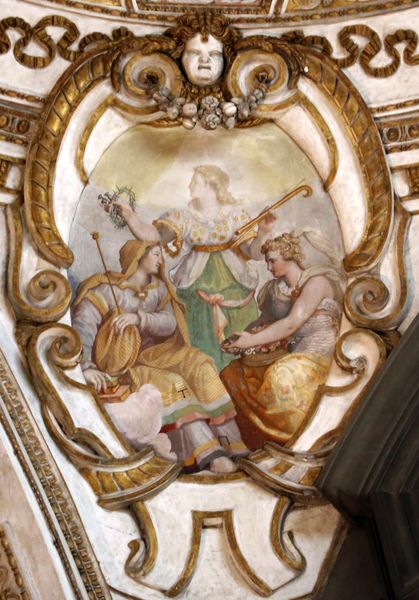
painting, mural
#
narrative-art
#
painting
#
oil painting
#
history-painting
#
mural
Copyright: Vela Zanetti,Fair Use
Curator: This is "Detalle Mural," a fresco created in 1941 by Vela Zanetti. As a mural, it speaks to the historical meeting of European and Indigenous cultures. Editor: It strikes me as quite monumental, despite this just being a detail. The two figures dominate the space, and even with the faded colors, they project a distinct sense of presence, almost of inevitability. Curator: That sense of presence is deliberate, a common characteristic in Zanetti’s work. He often tackled themes of social justice and the weight of history. This mural, like many of his frescoes, was publicly accessible. What sort of visual vocabulary do you observe? Editor: Well, the man clearly reads as the European, indicated by the elaborate, albeit softened, Renaissance attire. And the Indigenous woman – the feathered headdress and other native garments - presents a figure marked by pride, perhaps defiance, even in a subjugated stance. Together, they represent an entire era. Is that a declaration of sorts at the bottom of the frame? Curator: Indeed, you're right on both accounts. The composition is intentionally crafted to create tension between them and to convey the weight and complexity of historical encounter. As for the inscription, without getting into specifics, it commemorates the early contacts. Zanetti was, in many respects, contributing to ongoing debates about collective memory, the politics of memory at work through the visual language. Editor: It's powerful. There's a kind of melancholy baked into those very pigments – I wonder, do viewers still register those same messages today, do they reflect the artist's original sentiments? Perhaps there is more subtext at work than straightforward celebration, especially through today’s lens? Curator: It's a reminder of the evolving role art plays in shaping—or even reshaping—historical narratives, right? We must actively grapple with and reassess how this fresco engages with the political undercurrents of its era, ensuring critical discourse rather than passive acceptance of any single viewpoint. Editor: Precisely. Frescoes like these serve not only as portals to a specific period but also function as ever-shifting symbols. As an ongoing visual representation of complex history, it challenges our understanding and perhaps our contemporary beliefs, with layers of meaning exposed across time.
Comments
No comments
Be the first to comment and join the conversation on the ultimate creative platform.
